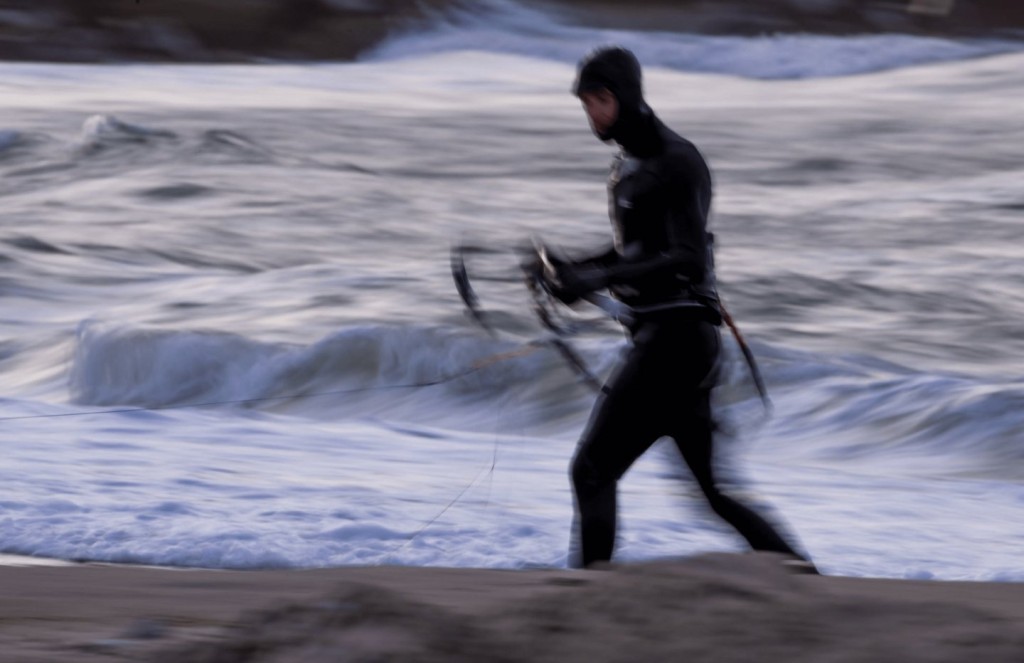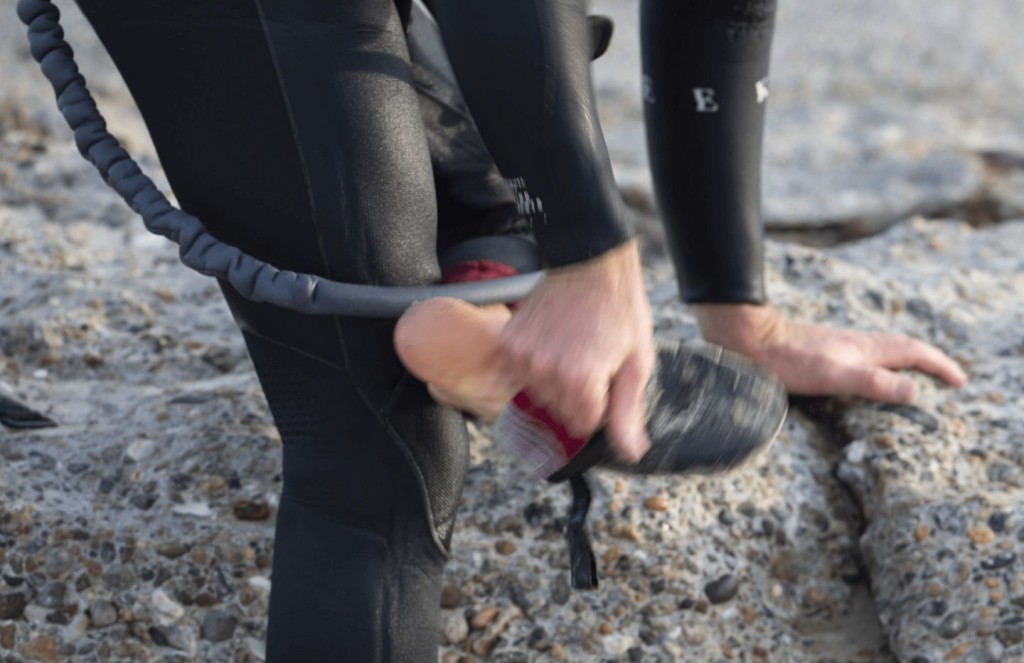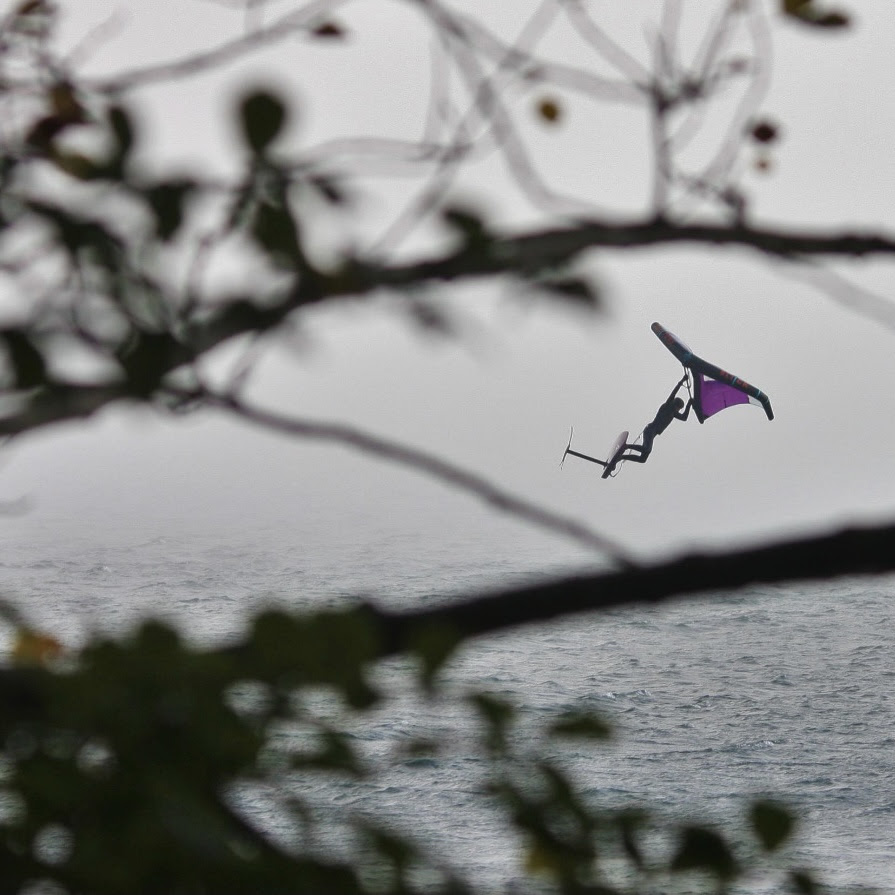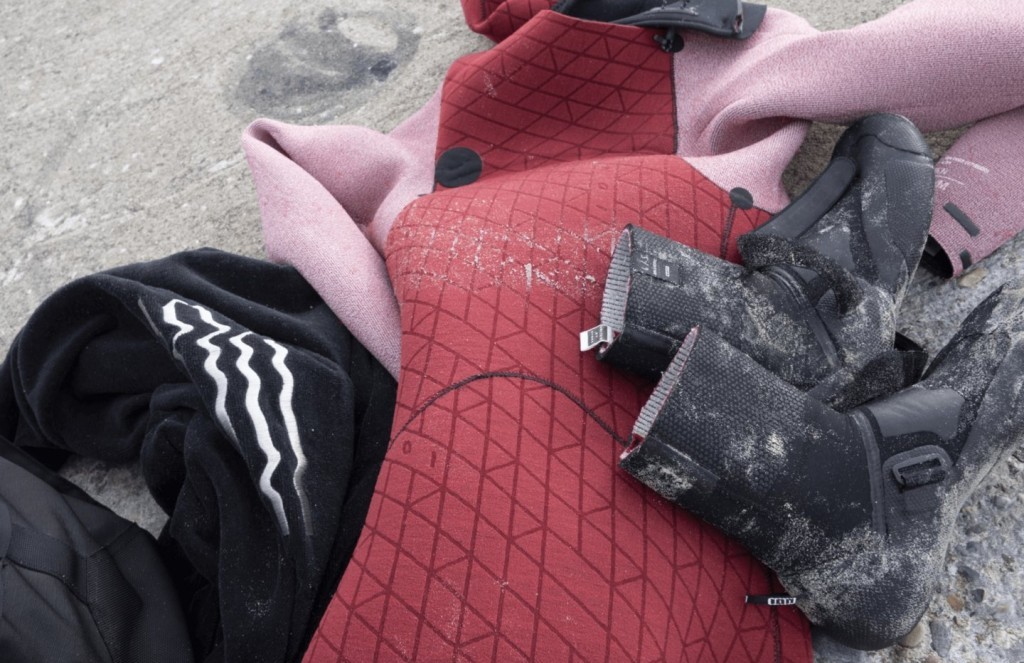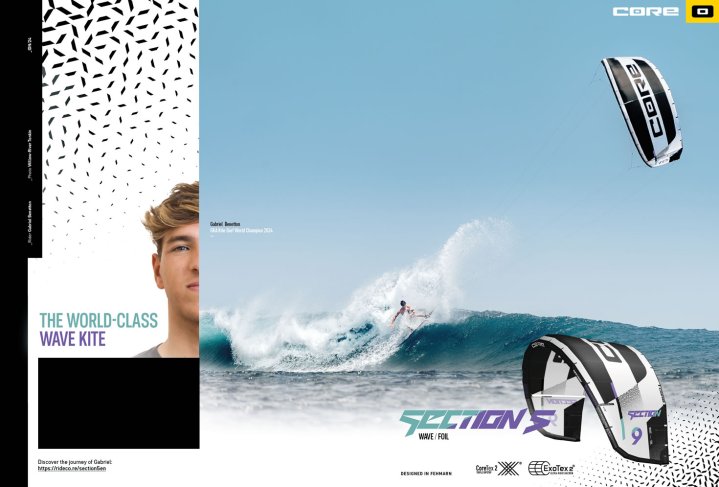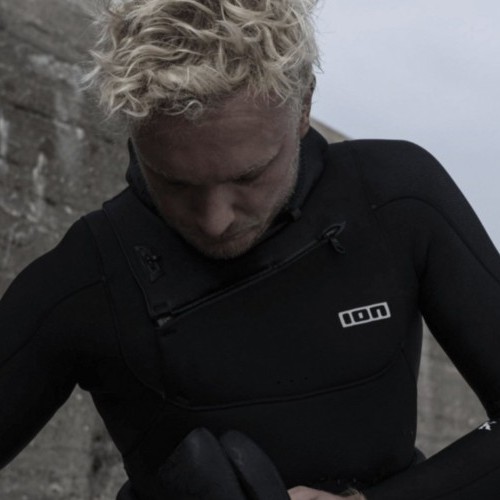
ION – Winter Essentials Interview with Michi Schuster
Features / Sat 13th Nov, 2021 @ 9:00 am
There is no such thing as an off-season. Choose the right winter essentials, and you will face the harshest conditions with a smile. Jackets, Hoods, Gloves, Footwear and Ponchos are your essential winter companions.
Want to know more than your friends and brag at the spot? We’ve got the best advice you can get out there straight from our Neoprene Product Developer Michael.
Wetsuit insights & tips from Michi Schuster, Product Manager ION Neoprene
Wetsuit technology has come a long way over the last decade, particularly in the last few years. Through the advances in materials used, taking a break from water sports during winter is a thing of the past. However, keeping warm when hitting the water is essential. Otherwise, our blood vessels will contract, and we start to freeze, which means the end of enjoyment, performance and eventually the session.
Michi Schuster, Neoprene Products Manager at ION, has some tips for us:
Michi, how does a wetsuit work?
Neoprene gains its insulating properties from zillions of tiny enclosed air bubbles created within the neoprene during its production process. The air in these bubbles is trapped and forms an insulating layer between the body and the water. The ideal scenario is that as little water as possible penetrates the suit. However, there is always some water entering the wetsuit, which our body temperature warms up, helping to keep us warm.
Are all types of neoprene the same?
What are the main differences in terms of the compounds of the materials, and how do they differentiate from one another?
There are different types of neoprene: Petroleum-based neoprene, limestone neoprene and Yulex neoprene. Petroleum-based neoprene is used less and less, limestone is probably the one that’s used the most by the manufacturers in our industry, and Yulex is the most environmentally friendly alternative of them all. But, at the same time, it is also the least flexible and the most expensive. Besides this, the actual neoprene foam has specific characteristics and can differ greatly in terms of flexibility, robustness and durability. That’s why it’s essential to choose the most suitable foam for each wetsuit model. Highly flexible foam is also more expensive than a stiffer one.
The neoprene lining plays a key role in its thermal insulation. Inner linings have also advanced drastically in recent years.
ION’s top of the line wetsuit models SEEK Select (men) and AMAZE Select (women) now feature our “Graphene Plush”, which makes these suits an additional 20% warmer than previously. That marks a quantum leap in wetsuit technology, and going for a session in 5 degrees suddenly has much more appeal.
What is “Graphene Plush”?
Every fibre of our “Graphene Plush” inner lining is laminated with a wafer-thin layer of graphene. Since its discovery, graphene has been considered a ‘miracle material’ and sounds more like science fiction than reality. Made up of a single layer of carbon atoms arranged in a hexagonal pattern like honeycombs, it’s not only the thinnest material in the world; it’s also one of the strongest. Due to its physical structure, graphene has unique properties exceeding anything previously used in wetsuit technology. Graphene heats faster and stores this heat much longer than other inner linings, offering optimal thermal properties for wingsurfing, kitesurfing and surfing. Another advantage of the two-dimensional construction is its high flexibility and stretch. Besides, the extremely strong carbon bonds make the material extremely robust and hardwearing. Plus, I love pointing out this one: We, as manufacturers, can regulate the degree of warmth by changing the percentage of graphene that we use in our wetsuits. As a result, ION wetsuits feature the highest percentage of graphene compared to all competitor brands!
Does that mean that you can choose a comparatively thinner suit to achieve the same warmth?
Yes, exactly, and that’s amazing! So, for example a 4/3 mm SEEK Select suit with “Graphene Plush” inner lining is as warm as any other 5/4 mm wetsuit on the market. In other words, the thickness of your wetsuit decreases, yet at the same time, the flexibility and thus the comfort level increases at more or less the same price.
What do you recommend for autumn and winter: “Double-lined “or “Smooth Skin “?
“Smooth skin“ suits are slightly warmer in windy conditions than “double-lined“ wetsuits. If it’s only about warmth, then you should choose “smooth skin“. However, if flexibility is also a factor, you should definitely consider going with a “double-lined“ wetsuit. Generally, even if, for example, the back panel of a wetsuit features “smooth skin” and the rest is “double-lined”, it helps a great deal against the wind chill. Thanks to the use of inner linings such as our “Graphene Plush”, double-lined wetsuits are almost as warm as smooth-skinned ones these days.
Which neoprene thickness – regardless of other material and manufacturing criteria – is recommendable for autumn and winter?
That’s almost impossible to answer across the board as it depends on several factors. For most Northern European countries I recommend a 4/3mm or 5/4mm for autumn, a 5/4mm for winter and a 5/4mm with a separate hood or even a 6/5mm with an integrated hood for extremely cold days. Obviouslthere’s’s always your personal sensitivity to cold as well as the air and water temperatures that play into the equation. Plus, the effective time spent in the water whilst practising your sport also needs to be considered, for example, a surfer is continuously in the water, whereas a kitesurfer — depending on their skill level and discipline — spends much less time actually in the waterLet’s’s also not forget the drysuits! Our Fuse dry suits have been designed to withstand even the fiercest conditions and they’re really good for kite foiling, wing foiling, windsurfing and SUPing.
Keyword hood. What about the headgear? Hood, beanie or the good old bobble hat?
Wearing a hood is definitely the smartest choice on really cold days. The best-case scenario is to buy a suit that already has a hood integrated into the design, however, even a separate hood will add quite a bit of warmth. I would recommend beanies only for colder autumn days rather than for really cold winter days. And bobble hats and board sports really don’t go together. Let’s take a look at integrated hood versus extra hood: The hood fully integrated into the wetsuit is the most practical option. Some people prefer their wetsuit without the integrated hood, though, as they feel it gives them more options and freedom to choose according to today’s conditions. However, the integrated hood has one big advantage: If during your session, you get warmer than you initially thought, you can just pull the hood back and continue riding. Yet with the separate hood, you have to get back on land to get rid of it unless you stick it into your wetsuit, which is rather annoying and certainly not that comfortable.
What else should we know about hoods and what do your think of neoprene beanies?
Hoods should always fit very snug so that minimal amounts of water can get in. The integrated hood features a much more “sealed” design, thus it’s also the warmest option. Our neoprene beanies offer extra thermal insulation for your head as well and will keep you warm on cold days, however, nothing can beat the warmth of an integrated hood.
Another really crucial aspects is the seams and the stitching, which result in big differences in the water permeability of a wetsuit. Can you tell us a little bit about that, please?
Sure! Wetsuit seams and their stitching are often overlooked, but they play a major factor when it comes to warmth, stretch and comfort. Here we distinguish between “glued blind-stitch” and “flatlock” stitching.
As the name suggests, “glued blind-stitch” are seams that are sewn and then glued and are therefore almost fully waterproof. “Flatlock” seams are not glued, feel nice on the body and are mostly used in thinner summer suits, as glueing is only possible with a neoprene thickness of 3mm or more. It should be noted that the “flatlock” stitching goes right through the neoprene, which leads to micro-holes through which water can enter, whereas the “blind-stitch” technique is done with a curved needle that only penetrates the top layer of the neoprene; thus, there are no micro-holes and the wetsuit is basically waterproof.
In addition to the seams, the suit can be further sealed using so-called “power seams” on the outside or “taped seams” on the inside. It’s important to find the right balance here, because too much of either of these two will compromise the wetsuit’s flexibility.
Thus, “Flatlock” is an entry-level seam and enables manufacturers to offer wetsuits in a lower price range. Is it easy to “upgrade” these wetsuits for minimal extra cost by adding layers, for example by wearing the thin shorty you used in the summer or a lycra you normally use for tropical holidays under your wetsuit? Is layering a sensible thing to do?
Definitely! There is an entire collection of different tops (short and long sleeves, tank tops etc.) and also shorts that can be worn as a layer underneath the wetsuit, it works really well! Also, if you’re hanging out on the beach waiting for the conditions to improve or just taking a break, a neo hoody or a neoprene jacket work a treat as they shelter you from the wind. Also a vest can be a good idea. Vests offer extra warmth and buoyancy at the same time, which particularly on cold days, really adds to your safety.
What about the right size of a wetsuit?
Generally, the snugger a wetsuit fits, the warmer it will be. I highly recommend going with the smallest size that is still comfortable. It’s simple: the tighter the wetsuit is, the less water can get in. A wetsuit is most effective when it’s completely dry on the inside. Say you crash with your kite or windsurfer and you’re getting fully submerged in cold water, there will be a “water flush”, i.e. the water that has already been heated by your body in the wetsuit gets flushed out and new water gets in, which in turn requires more energy to be warmed up again. If you’re in between sizes, always go with the smaller size!
How about booties: What makes a good pair of booties for the cooler seasons?
It’s simple, the thicker the bootie, the warmer it is. A 6/5mm pair is significantly warmer than the 3/2mm model. Furthermore, full-surface inner lining, the quality of the seams/stitching as well as the flexibility of the material are decisive factors for thermal insulation. With regards to the seams and the stitching, what I just explained for wetsuits, i.e. “flatlock” versus “blind-stitch”, also applies to booties and the same accounts for inner linings. By the way, all of the above applies to neoprene gloves as well.
What are your final five tips to be all set to stay warm in winter?
1. Don’t compromise on quality. Once you’re in the water, you’ll regret very quickly not having bought the better quality wetsuit. Trust me, you can’t trick your body into feeling warm.
2. “Glued blind-stitch” is better than “flatlock”.
3. Taped seams will keep you warmer for longer than sewn seams.
4. If in doubt, always go for the smaller size that’s still comfortable.
5. An integrated hood is warmer than a separate hood or a beanie.
6. A lot of heat is lost through your hands and feet — protect them from the cold accordingly!
Interview by ION
By Jen Tyler
Italian/Egyptian Jen Tyler grew up on the sandy beaches of the Red Sea and has been on the IKSURFMAG & Tonic Mag team since 2017.


